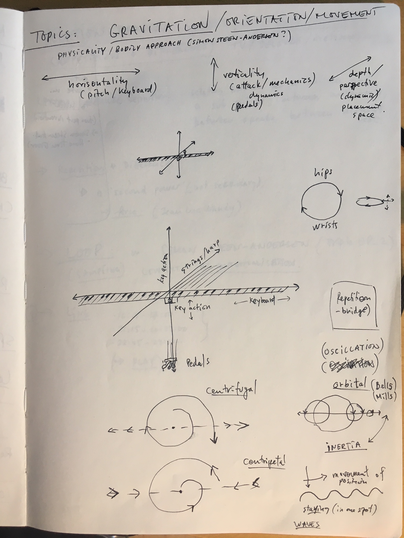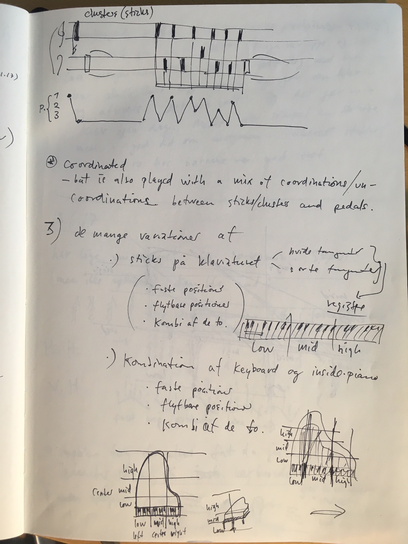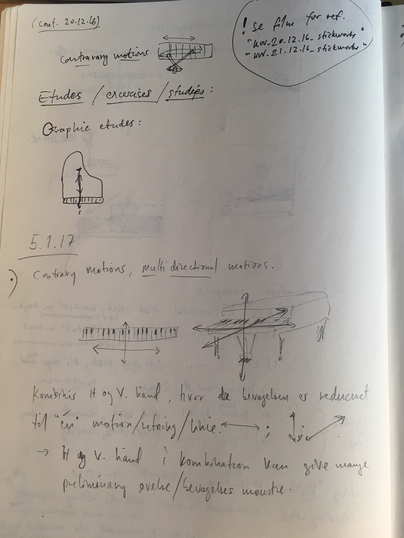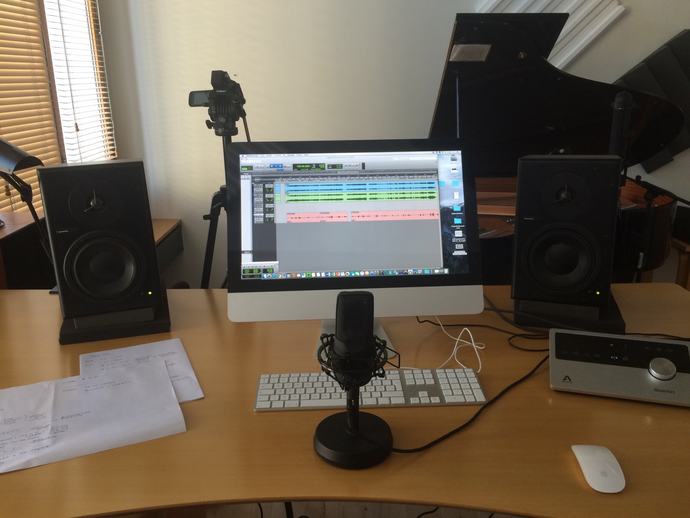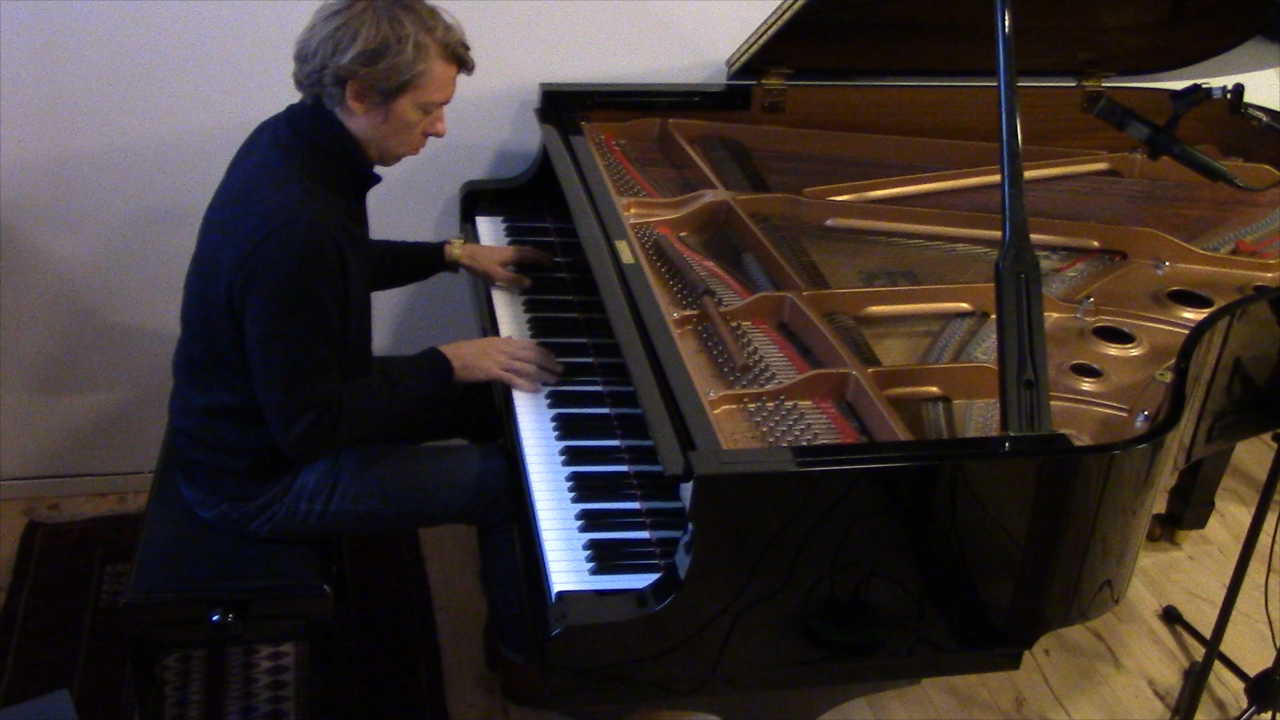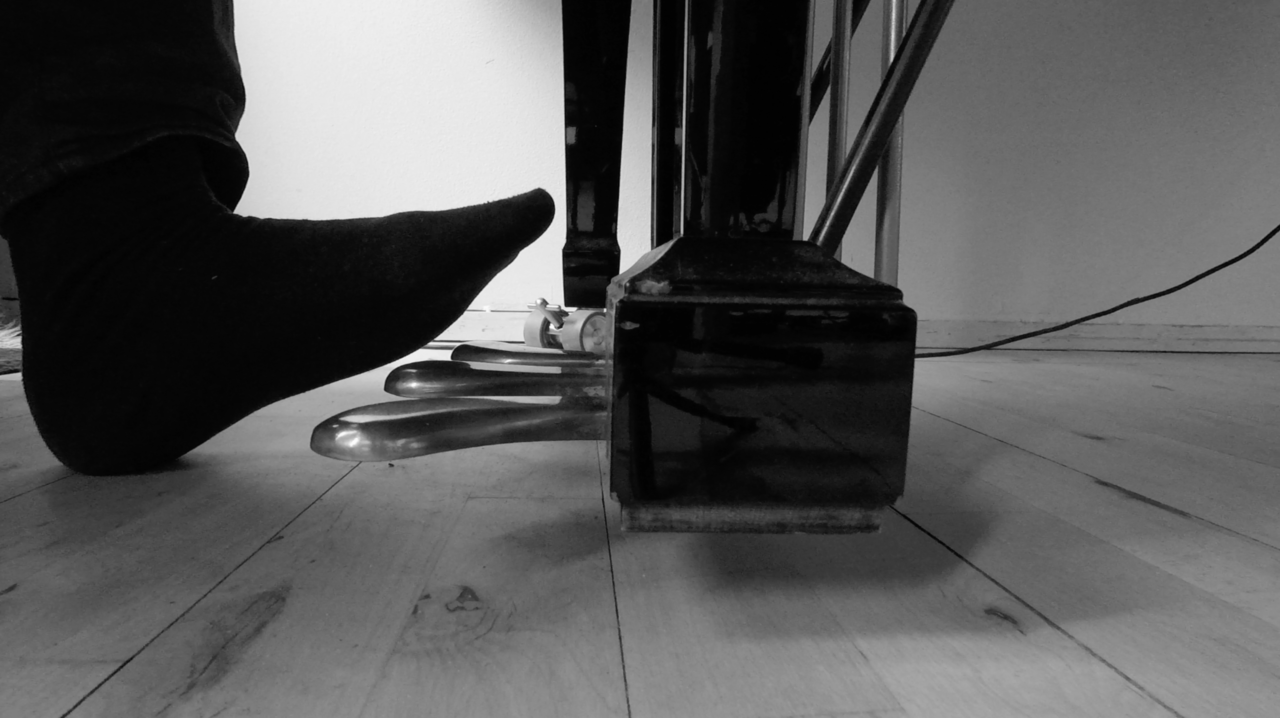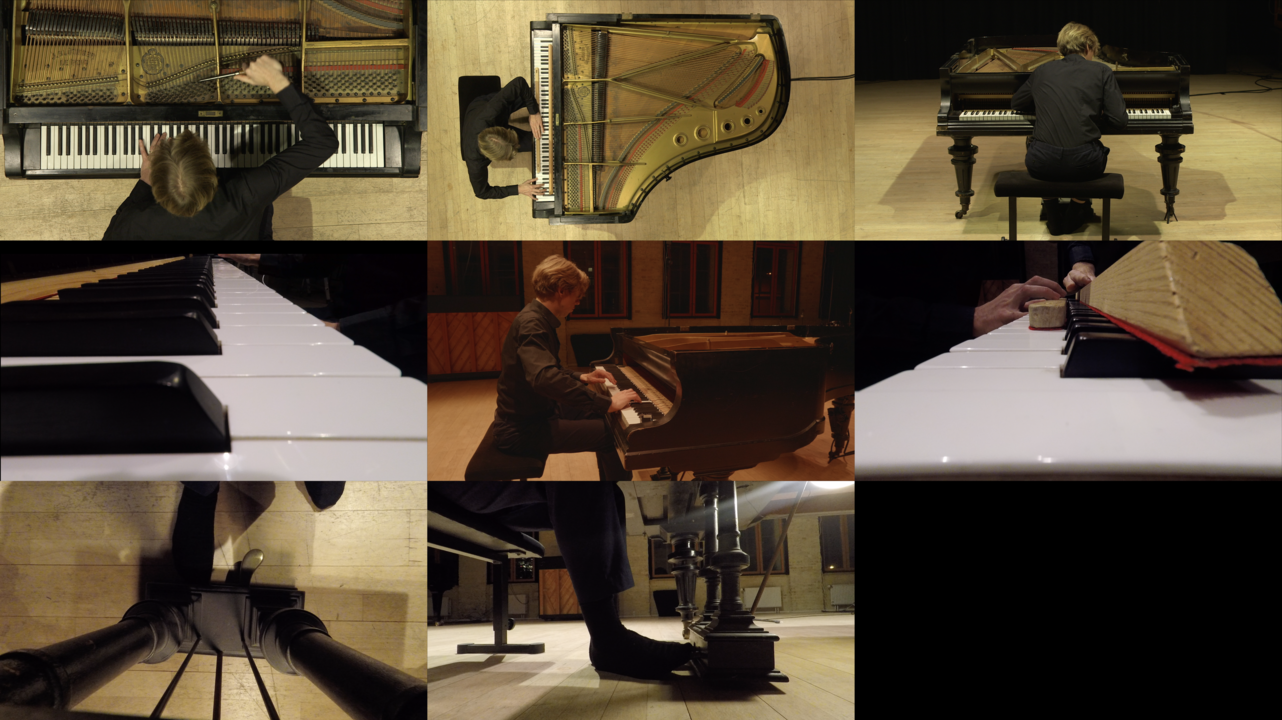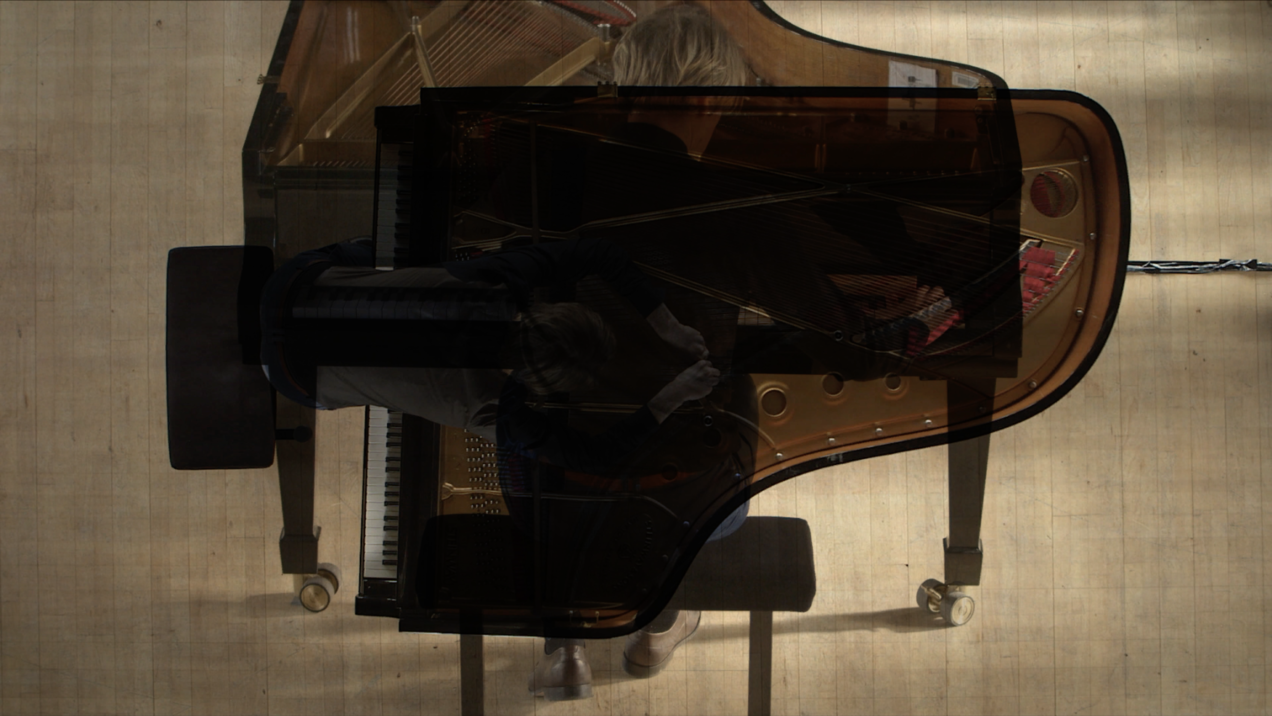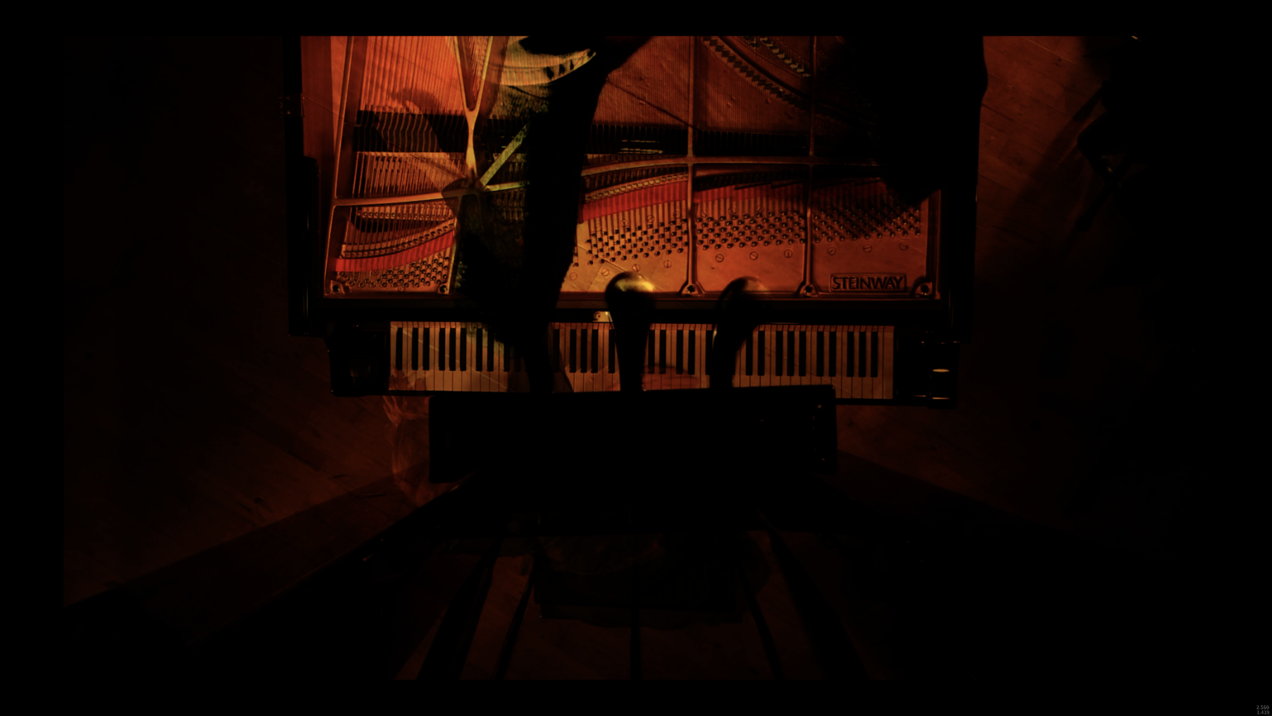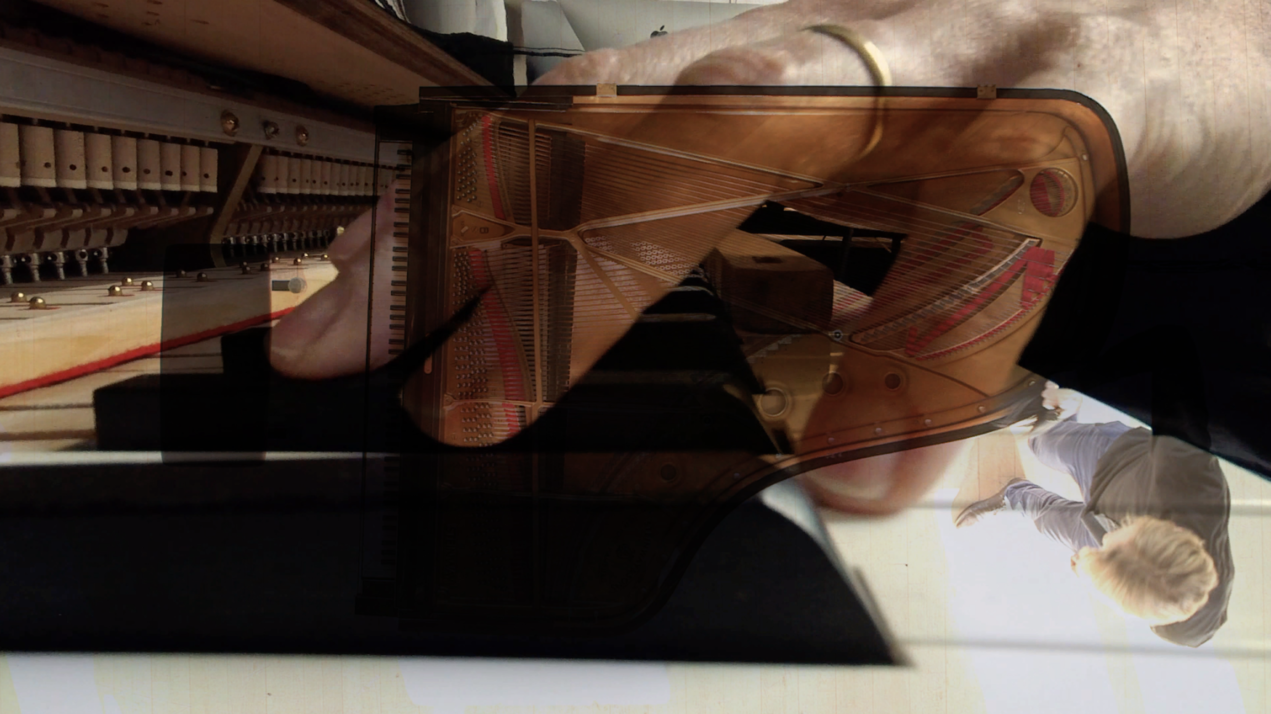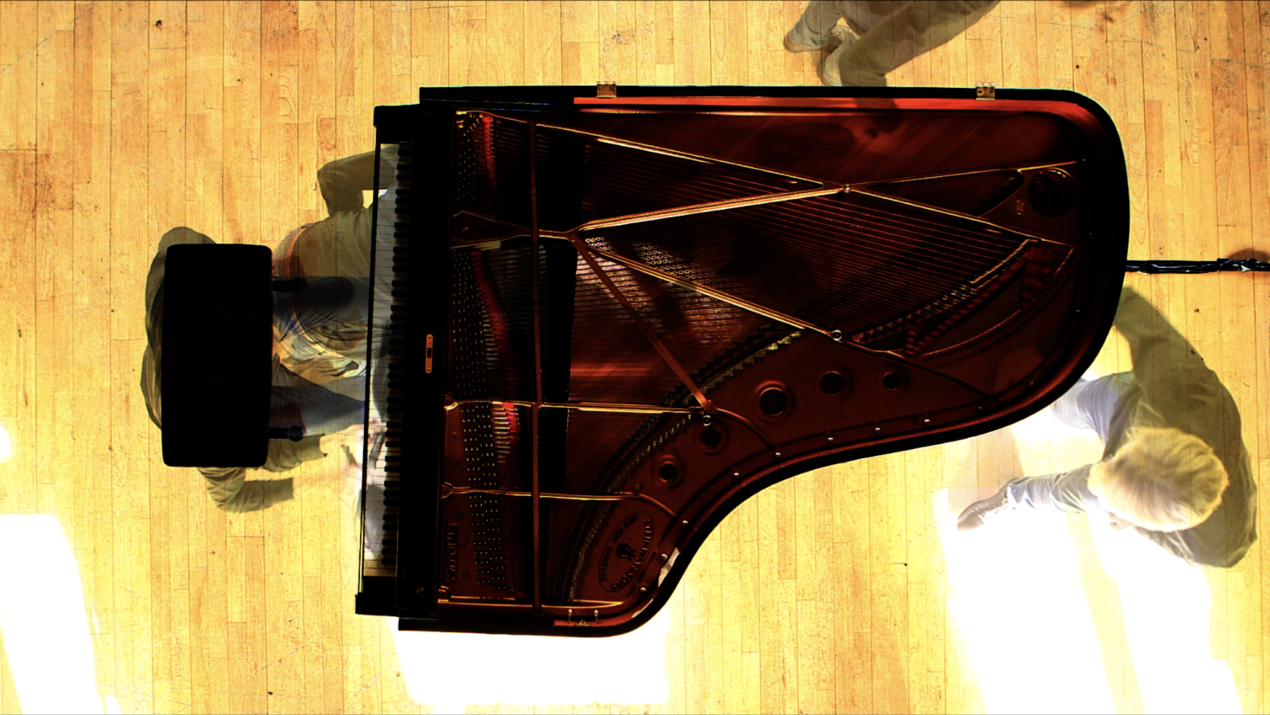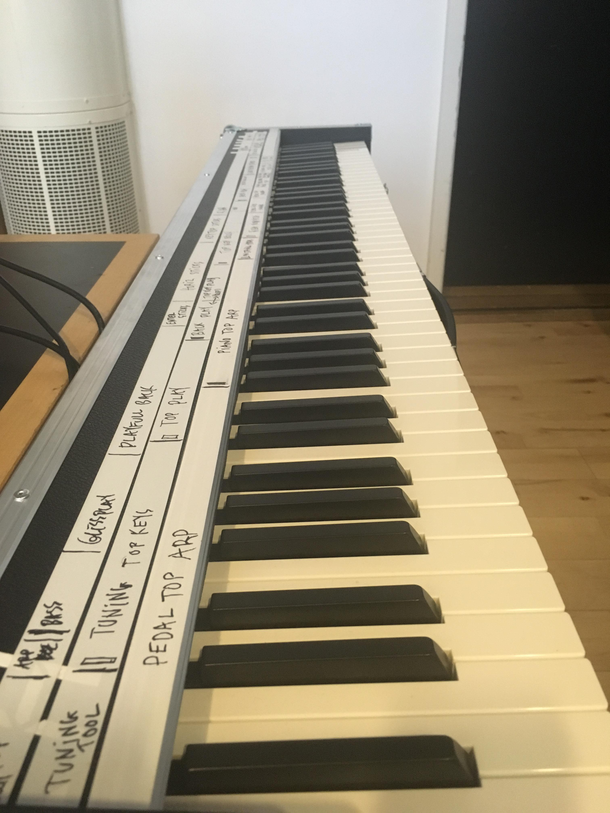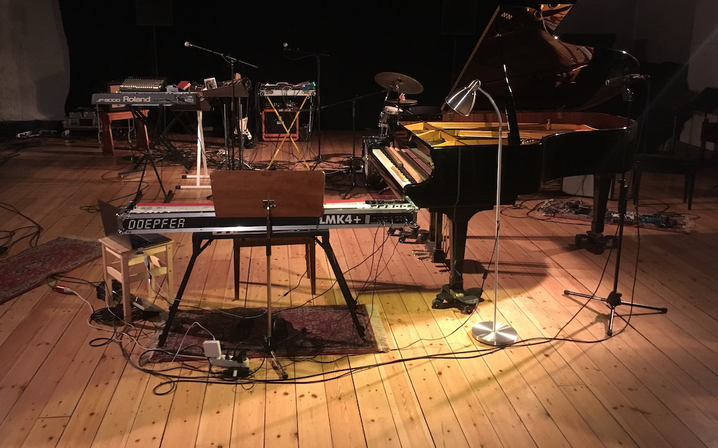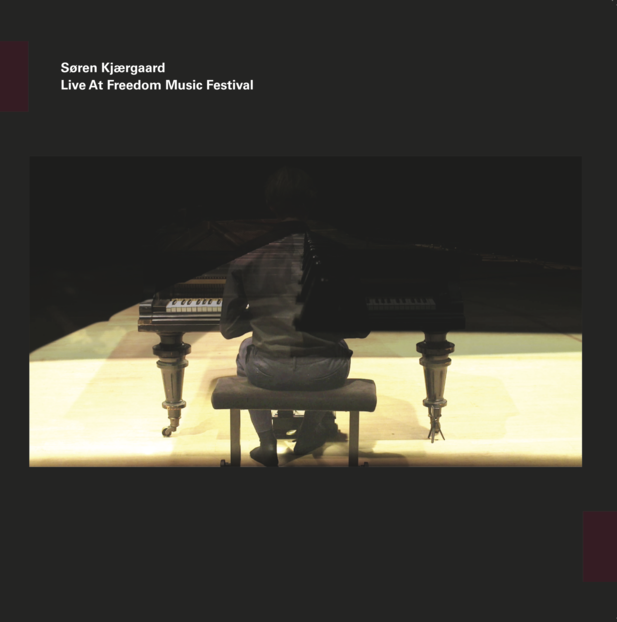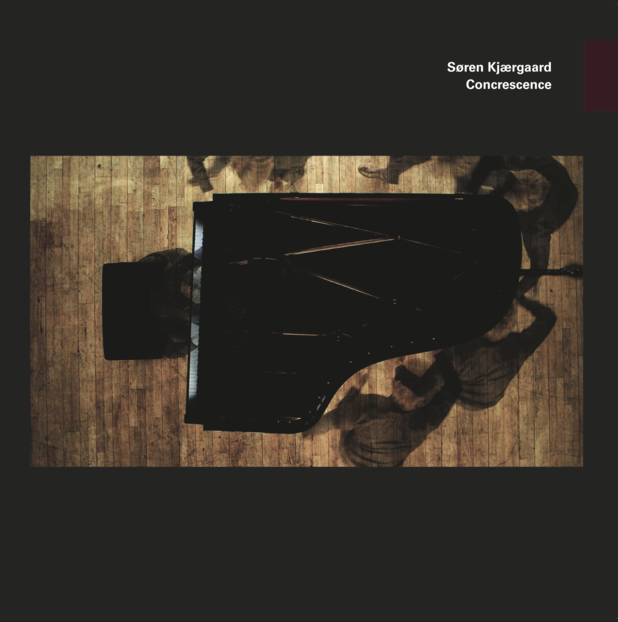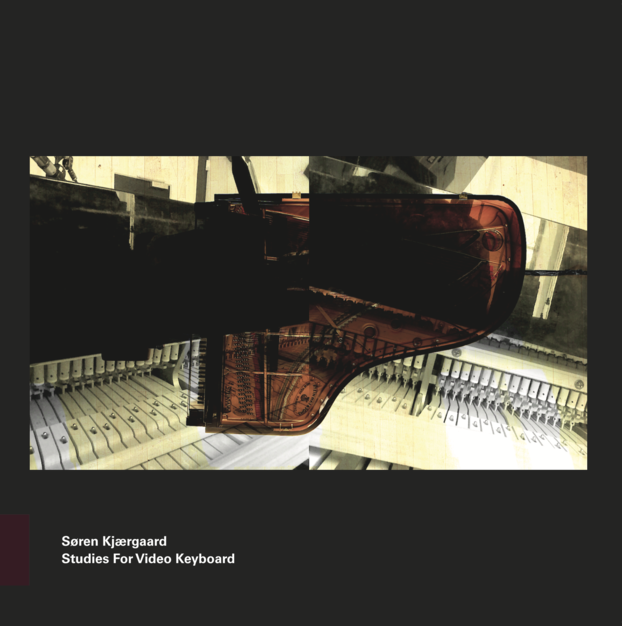Along with the sketchbook, I began to run a digital logbook (Evernote), containing text, memos, images and links. Towards the conclusion of the project period, I printed all the written entries in the logbook in order to set it up as a map that I could overview. Both the digital logbook and the printed map version served as an important terrain in which I could trace connections, link topics and organize my process reflections and documentation.
LOG
In a sketchbook, I drew preliminary visualizations of the topographical approaches, sketching out ideas eventually conceptualized as stickworks, fieldworks etc. This interplay between the topographical instrument practice and the sketching turned out to be a core foundation of the PRACTICE grounds.
PRACTICE GROUNDS
Investigations of various playing techniques and approaches to the topography of the piano and the player–piano relation. This matrix of "works" provides an overview on these approaches of which some were launched at the beginning and others initiated deeper into the project, to link up in a methodologically multilayered process, elucidated in PRACTICE Grounds.
AUDIO DOCUMENTATION
In order to reflect on my pianistic practice, I began sound recording it and experimented with a listening and feedback method coined critical listening further described in PRACTICE grounds in a section on Mindworks.
At first, I recorded my playing with a simple setup using a Sony handycam in single point position, filming the pianist/piano in a profile view - a quite conventional perspective and typical of the audience view. However, I would also begin to experiment with a GoPro that was set up to film other perspectives. This led to three multi-camera sessions where my playing was filmed in a more professional set up, investigating various frames and perspectives. It was on the basis of these sessions that the Video Keyboard was conceptualized and slowly began to sprout.
LIVE PERFORMANCE
As part of the research project, I performed live and documented the concerts.The performances took place in Tokyo, Copenhagen, San Francisco and Oslo, mostly in acoustic settings, parallel to the development of the Video Keyboard, on which I also began to perform in the final stages of the project.
The Video Keyboard was developed in collaboration with musician and programmer, Gianluca Elia. The intention was to flip the perspective from observation to play. In short, all of the documented material now served as a memory bank of events and actions from different locations, dates, times, perspectives, pianos etc. The documents were cut, sampled and remapped onto a digital keyboard where every key now contained an audio-visual sample, illustrated in VIDEO keyboard.
PRESENTATIONS
Throughout the project I presented the research process in formats varying between lectures to performances where the Video Keyboard along the way became an instrument of dissemination itself, as further illustrated here.
PUBLISHED WORKS
The research project resulted in three album releases: Live At Freedom Music Festival and Concrescence which are acoustic solo piano recordings, carried out in a concert setting and a studio setting. The third album Studies For Video Keyboard features an audio-only set of improvisatory pieces performed on the Video Keyboard, along with the video versions that were released digitally on Vimeo. For further info please go to PUBLISHED Works.


